
Earl of Derby is a title in the Peerage of England. The title was first adopted by Robert de Ferrers, 1st Earl of Derby, under a creation of 1139. It continued with the Ferrers family until the 6th Earl forfeited his property toward the end of the reign of Henry III and died in 1279. Most of the Ferrers property and the Derby title were then held by the family of Henry III. The title merged in the Crown upon Henry IV's accession to the throne in 1399.

Edward George Villiers Stanley, 17th Earl of Derby,, styled Mr Edward Stanley until 1886, then The Hon Edward Stanley and then Lord Stanley from 1893 to 1908, was a British soldier, Conservative politician, diplomat, and racehorse owner. He was twice Secretary of State for War and also served as British Ambassador to France.

Sir John Stanley, KG of Lathom, near Ormskirk in Lancashire, was Lord Lieutenant of Ireland and titular King of Mann, the first of that name. The Stanley family later gained the title Earl of Derby and remained prominent in English history into modern times. He married a wealthy heiress, Isabel Lathom, which, combined with his own great abilities, allowed him to rise above the usual status of a younger son.
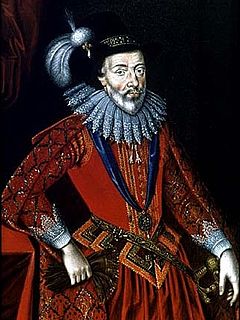
William Stanley, 6th Earl of Derby, KG was an English nobleman and politician. Stanley inherited a prominent social position that was both dangerous and unstable, as his mother was heir to Queen Elizabeth I under the Third Succession Act, a position inherited in 1596 by his deceased brother's oldest daughter, Anne, two years after William had inherited the Earldom from his brother. After a period of European travel in his youth, a long legal battle eventually consolidated his social position. Nevertheless, he was careful to remain circumspect in national politics, devoting himself to administration and cultural projects, including playwriting.

James Stanley, 7th Earl of Derby, KG of Lathom House in the parish of Lathom in Lancashire, was an English nobleman, politician, and supporter of the Royalist cause in the English Civil War. Before inheriting the title in 1642 he was known as Lord Strange. He was feudal Lord of the Isle of Man, where he was known as "Yn Stanlagh Mooar".
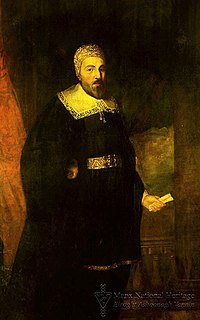
Illiam Dhone or Illiam Dhôan, also known as William Christian, was a Manx politician and depending on viewpoint, patriot, rebel or traitor. He was a son of Ewan Christian, a deemster. In Manx, Illiam Dhone literally translates to Brown William—an epithet he received due to his dark hair, and in English he was called Brown-haired William. Dhone was a significant figure on the Isle of Man during the English Civil War and the Manx Rebellion of 1651. He was executed for high treason in 1663. In the centuries after his death he has become a "martyr and folk-hero, a symbol of the Island's cherished freedoms and traditional rights".

Charlotte Stanley, Countess of Derby, born Charlotte de La Trémoille, is famous for her robust defence of Lathom House during the English Civil War.

Charles Stanley, 8th Earl of Derby was an English nobleman and politician. He was the eldest son of James Stanley, 7th Earl of Derby and Charlotte de La Trémouille.
Colonel Henry William Lowry-Corry DL, JP, styled The Honourable from birth, was a British Army officer and Conservative politician.

James Stanley, 10th Earl of Derby, styled The Honourable until 1702, was a British peer, soldier and politician.
Admiral Sir Phipps Hornby, was a prominent and experienced Royal Navy officer of the nineteenth century. Hornby served on frigates throughout most of his wartime experience, which included witnessing the Nore Mutiny first hand aged 12 in 1797. Later, commanding his own sixth-rate HMS Volage in 1811, Hornby played a vital role in the British victory at the Battle of Lissa. At Lissa a British squadron under William Hoste overwhelmed a French force more than twice their own strength, Volage combating a much larger ship alone for several minutes and taking numerous casualties, including Hornby, who was wounded.

Sir Gilbert Gerard was a prominent lawyer, politician, and landowner of the Tudor period. He was returned six times as a member of the English parliament for four different constituencies. He was Attorney-General for more than twenty years during the reign of Elizabeth I, as well as vice-chancellor of the Duchy of Lancaster, and later served as Master of the Rolls. He acquired large estates, mainly in Lancashire and Staffordshire.

Alice Spencer, Countess of Derby was an English noblewoman from the Spencer family and noted patron of the arts. Poet Edmund Spenser represented her as "Amaryllis" in his eclogue Colin Clouts Come Home Againe (1595) and dedicated his poem The Teares of the Muses (1591) to her.

Sir William Courtenay, 1st Baronet was an English politician.
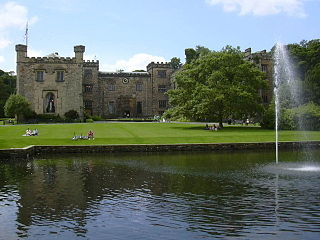
The Towneley or Townley family are an English (UK) family whose ancestry can be traced back to Norman England. Towneley Hall in Burnley, Lancashire, was the family seat until its sale, together with the surrounding park, to the corporation of Burnley in 1901. Towneley Hall is now a Grade I listed building and a large museum and art gallery within Towneley Park (UK).
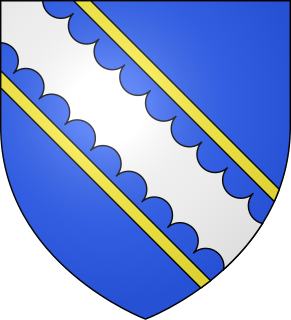
Sir Faithful Fortescue (1585–1666), of Dromiskin in County Louth, Ireland, was Governor of Carrickfergus in Ireland, long the chief seat and garrison of the English in Ulster and was a royalist commander during the English Civil War.
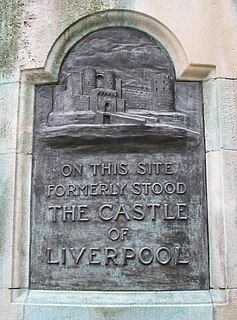
Thomas Birch was an English landowner, soldier and radical Puritan who fought for Parliament in the Wars of the Three Kingdoms, and sat in the House of Commons at various times between 1649 and 1658.
Sir John Holcroft of Holcroft Hall, Culcheth, was a soldier, politician, and landowner of the Tudor period. He was returned twice as a member of the English parliament for Lancashire.
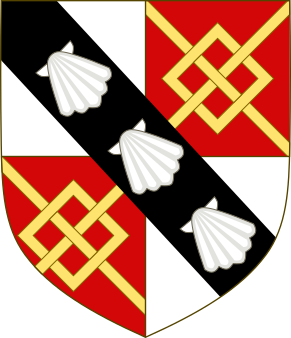
Sir John Spencer was an English nobleman, politician, knight, sheriff, landowner, and Member of Parliament. He was an early member of the Spencer family.
Brandlesholme Old Hall is a Grade II* listed privately owned historic house in Brandlesholme, Bury, Greater Manchester.















